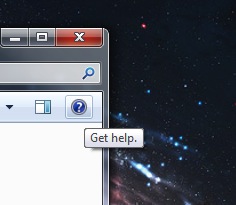On Context, Despair, and Interface
André Malraux referring to the museum’s rise writes, “We forget they have imposed on the spectator a wholly new attitude towards the work of art. For they have tended to estrange the works they bring together from their original functions and to transform even portraits into ‘pictures.’”[1] Malraux clearly considers these acts of estrangement to be reductive, and justifiably so. This is especially pertinent given the museum’s history as an imperialist site, a place where pillaged signifiers are arranged and rearranged into colonialist exhibitions, where objects are both distanced and fetishized at the expense of the cultures they emerge from. Consequently, context appears both indispensable and political, an absolute necessity for the ethical understanding of objects within the milieu of a collection. But is this always the case?
Undoubtedly concerns of context continue to be important in today’s networked culture. The picture floats evermore detached, freely moving from blog to blog in an instinctual and instantaneous act of reposting, with more and more of its meaning eroded away with every click. However fraught this characterization is, there must be something on the other side, some circumstance in which a commitment to context is limiting. Decontextualization, recontextualization, and any resulting attitudes are not categorically adverse; they also hint at potential. I am referring to a distinct type of analysis made explicitly possible by plucking an object from its habitat, examining it, and arranging it along a new axis.
 This is not an easy position to articulate considering how decontextualization, objectivity, and authoritarian taxonomies are interrelated. It is also not easy considering how interpretative accuracy and cultural respect are linked to contextual dignity. Regardless, the question is, what inherent characteristics does contextuality have? And under what conditions can decontextualization, as it relates to collecting, create reflexive effects?
This is not an easy position to articulate considering how decontextualization, objectivity, and authoritarian taxonomies are interrelated. It is also not easy considering how interpretative accuracy and cultural respect are linked to contextual dignity. Regardless, the question is, what inherent characteristics does contextuality have? And under what conditions can decontextualization, as it relates to collecting, create reflexive effects?
Screenshots of Despair is an interesting blog to think through these problems. Generated predominately by user-made pictures of the screen, it is open to community posting. The only condition is that the screenshot conveys some sense of alienation reflected in the act of computing. “Image deleted,” “access denied,” “nothing shared;” these are characteristic types of posts. The blog’s maker, Josh Kimball writes, “It’s about the gap between people and machines. And it’s about isolation.”[2] While this may be true, Screenshots of Despair is also about recognition—specifically, the recognition of the human condition within the act of computing.
 More than an expression of isolation, this collection of screenshots express the need to isolate, the need to tear a moment from the continuous flow of computing, from the context of the interface, and to make lists of these estranged instances. And although they originate in the mundane, once these pictures of the screen are excised and ordered according to “despair” something unique happens. Having seen others capture the interface along this index, users find it easier and easier to appreciate, and even construct, these moments. The likelihood that an occasion will be worth differentiating increases with every post, with every view.
More than an expression of isolation, this collection of screenshots express the need to isolate, the need to tear a moment from the continuous flow of computing, from the context of the interface, and to make lists of these estranged instances. And although they originate in the mundane, once these pictures of the screen are excised and ordered according to “despair” something unique happens. Having seen others capture the interface along this index, users find it easier and easier to appreciate, and even construct, these moments. The likelihood that an occasion will be worth differentiating increases with every post, with every view.
 The eye wanders away, no longer simply service computing but observing the scene of computing itself. The interface is transformed into a stage. The user acts upon it in atypical and even performative ways, resulting in reflexive attitudes towards the graphics on the screen, as well as interaction with these graphics. A new kind of sense is made of computing the moment despair is spotted, framed, and grouped into an assemblage—a series of acts that critique the facile link purported between network connection and human connection. Screenshots of Despair not only points out “the gap between people and machines,” but also questions the naïve grafting of utopic sensibilities onto computing. This reevaluation can only come to exist as moments of computing are transformed into pictures, moments far removed from their stated function, and as these pictures are recontextualized into a specific collection. As it turns out decontextuality is not intrinsically unconstructive, but rather dependent on the context in which it finds itself being put to use.
The eye wanders away, no longer simply service computing but observing the scene of computing itself. The interface is transformed into a stage. The user acts upon it in atypical and even performative ways, resulting in reflexive attitudes towards the graphics on the screen, as well as interaction with these graphics. A new kind of sense is made of computing the moment despair is spotted, framed, and grouped into an assemblage—a series of acts that critique the facile link purported between network connection and human connection. Screenshots of Despair not only points out “the gap between people and machines,” but also questions the naïve grafting of utopic sensibilities onto computing. This reevaluation can only come to exist as moments of computing are transformed into pictures, moments far removed from their stated function, and as these pictures are recontextualized into a specific collection. As it turns out decontextuality is not intrinsically unconstructive, but rather dependent on the context in which it finds itself being put to use.
[1] Screenshots of Despair, “About,” http://screenshotsofdespair.tumblr.com/
[2]André Malraux and Stuart Gilbert, The Voices of Silence (Princeton, NJ: Princeton University Press, 1978), 13-14.




Dilettante Mail
Get updates from us a few times a year.